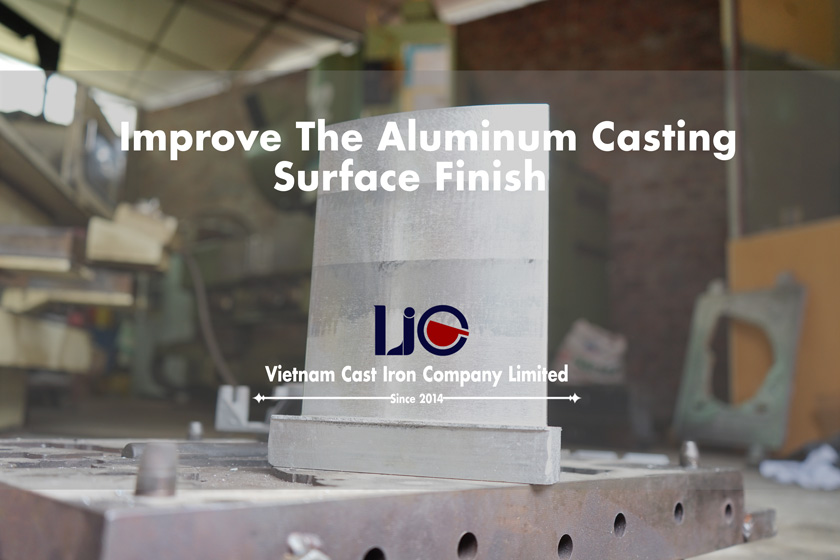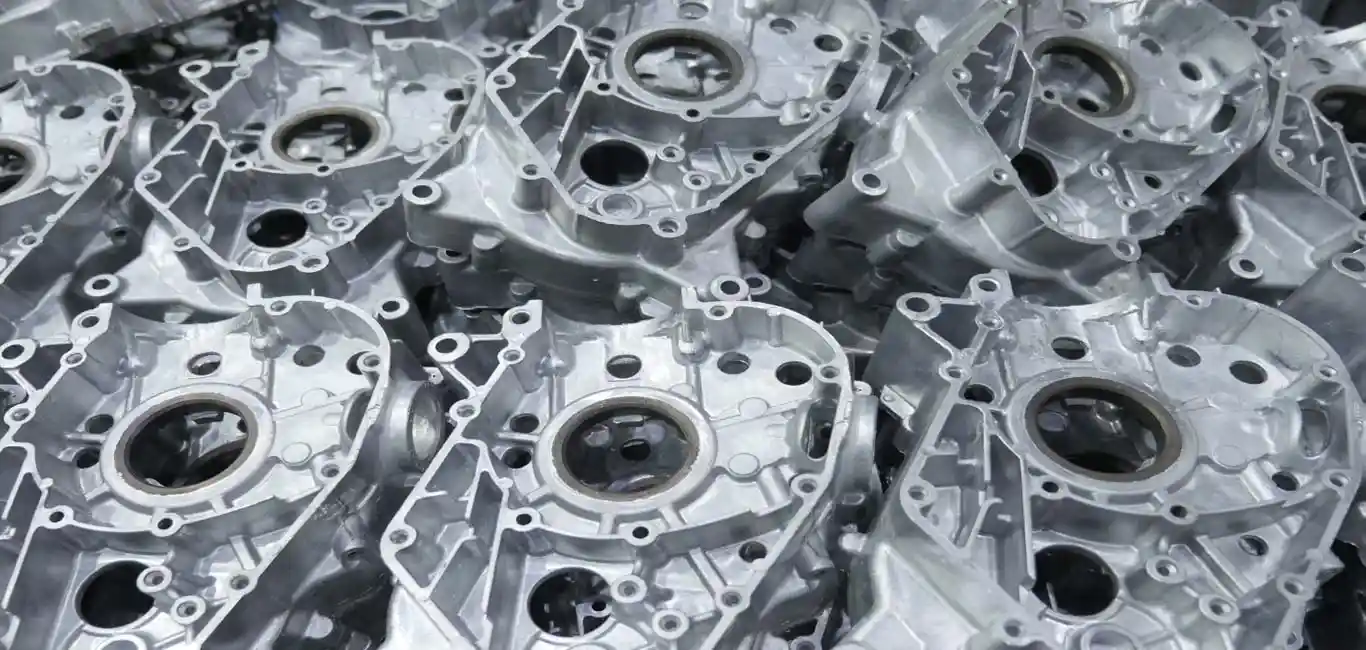Design flexibility with Aluminum Casting for modern projects
Wiki Article
Every little thing You Required to Find Out About the Uses and Perks of Aluminum Castings
Aluminum castings play an important function across numerous markets, using unique homes that improve product efficiency. Their lightweight nature and strength make them ideal for applications in automotive and aerospace sectors. Furthermore, the flexibility of casting approaches enables for intricate designs and tight tolerances. As the demand for lasting services climbs, recognizing the advantages and applications of aluminum castings ends up being progressively crucial. What details benefits do they supply over various other materials?Overview of Aluminum Casting Processes
Aluminum casting procedures include a selection of methods made use of to form molten aluminum right into preferred kinds. These methods include sand casting, die spreading, and financial investment spreading, each offering distinctive advantages depending on the application (Aluminum Casting). Sand spreading involves developing a mold from sand, enabling elaborate designs and large elements, while die casting uses high stress to inject liquified aluminum right into steel mold and mildews, ensuring precision and smooth coatings. Investment spreading, likewise recognized as lost-wax casting, creates intricate forms with exceptional dimensional precision, making it suitable for comprehensive elementsThese procedures are characterized by their capacity to generate lightweight, resilient parts that exhibit outstanding deterioration resistance. The adaptability of aluminum enables personalization in various sectors, from vehicle to aerospace. In addition, the capacity to reuse aluminum improves the sustainability of these casting procedures, lowering environmental impact while preserving material honesty. Understanding these techniques is essential for maximizing production efficiency and accomplishing high-grade aluminum castings.
Trick Applications of Aluminum Castings
Aluminum castings play an important duty throughout various markets, specifically in automotive, aerospace, and customer electronic devices. In the automobile sector, they add to lightweight structures that improve gas performance. Aerospace parts profit from aluminum's strength-to-weight ratio, while consumer electronic devices utilize its flexibility for reliable production.Automotive Sector Applications
As the automobile market proceeds to progress, producers significantly rely upon aluminum castings for their lightweight yet long lasting residential properties. These castings play a crucial duty in improving lorry efficiency, gas efficiency, and general safety and security. Secret applications consist of engine blocks, transmission housings, and structural components, which benefit from aluminum's outstanding strength-to-weight proportion. Furthermore, aluminum castings promote intricate geometries, permitting ingenious layouts that boost aerodynamics and reduce drag. The corrosion resistance of aluminum additionally adds to durability, minimizing maintenance costs for both producers and customers. As electric vehicles gain popularity, aluminum castings are necessary for battery units and various other parts, even more solidifying their significance in the future of automotive manufacturing.Aerospace Part Manufacturing
In the aerospace field, aluminum castings are integral to the manufacturing of light-weight, high-performance components. These castings are vital for making parts such as engine real estates, structural frames, and touchdown gear elements, where weight decrease is vital for fuel performance and total performance. The excellent strength-to-weight proportion of aluminum permits for the advancement of complex geometries that improve aerodynamics. Additionally, aluminum's resistance to rust adds to the longevity and integrity of aerospace parts, guaranteeing safety and security in trip procedures. The spreading procedure additionally enables exact tolerances, which is essential in meeting rigid aerospace market standards. Generally, aluminum castings play an essential duty beforehand aerospace innovation while sustaining the sector's promote lasting practices.Consumer Electronics Manufacturing
Making use of aluminum castings in consumer electronics production has actually ended up being increasingly substantial because of their light-weight and sturdy properties. Makers utilize these castings to create parts for various gadgets, including mobile phones, laptops, and pc gaming consoles. Aluminum's exceptional thermal conductivity also aids in warmth dissipation, boosting device efficiency and durability. The adaptability of aluminum enables for elaborate styles and complex geometries, enabling sleek and modern-day looks that appeal to customers. Furthermore, aluminum castings can be quickly reused, straightening with the expanding demand for sustainable production methods. As modern technology advances, the duty of aluminum castings in creating cutting-edge and efficient consumer electronic devices is expected to increase, making them a staple in the market.
Benefits of Using Aluminum Castings
While numerous materials are readily available for casting, aluminum sticks out due to its special mix of lightweight residential or commercial properties, stamina, and rust resistance. The low density of aluminum makes it an ideal option for applications where weight reduction is essential, such as in the auto and aerospace sectors. Its outstanding strength-to-weight proportion enables manufacturers to develop durable elements without adding too much weight.In addition, aluminum castings can be created with complex designs and tight resistances, making it possible for complex geometries that are difficult to attain with other materials. The flexibility of aluminum enables various casting approaches, including sand, pass away, and investment spreading, satisfying varied production requirements. In addition, aluminum's convenience of machining and ending up improves its allure, assisting in the development of top notch surface area finishes. Overall, the benefits of making use of aluminum castings add to improved efficiency and effectiveness in numerous applications across various sectors.
Deterioration Resistance in Aluminum Castings

All-natural Oxide Layer
An all-natural oxide layer kinds on the surface of aluminum castings, giving a crucial barrier versus ecological factors that can lead to wear and tear. This thin, protective film is a result of the aluminum's reaction with oxygen in the air, efficiently protecting the underlying steel from wetness, chemicals, and contaminants. Consequently, aluminum castings exhibit excellent rust resistance, which improves their long life and toughness in numerous applications. The oxide layer is not only helpful for security but likewise contributes to visual qualities, as it can develop a matte coating that lots of sectors locate enticing. Furthermore, this all-natural process decreases the demand for added finishes, making aluminum castings a cost-effective choice for manufacturers looking for trustworthy, durable materials.Alloy Variants Impact
The composition of aluminum alloys significantly influences their corrosion resistance properties in castings. Various alloy variants, such as 1xxx, 2xxx, and 6xxx series, show distinctive degrees of sensitivity to corrosion. 1xxx alloys, mainly made up of pure aluminum, deal exceptional deterioration resistance due to their high purity. On the other hand, 2xxx alloys, which include copper, may experience substantial rust when revealed to harsh atmospheres. 6xxx alloys, incorporating magnesium and silicon, strike a balance between toughness and resistance. The existence of alloying elements can enhance or reduce safety oxide layers, eventually affecting longevity and efficiency. Comprehending these variations is important for selecting the right alloy for specific applications where deterioration resistance is crucial.Design Flexibility and Customization
Various materials exist for casting applications, aluminum stands out due to its exceptional style versatility and potential for personalization. This convenience allows designers and designers to produce intricate forms and types that meet particular useful needs. Aluminum Casting. The low density of aluminum makes it possible for lightweight designs, which is particularly useful in sectors such as automotive and aerospace, where weight reduction is vitalAluminum castings can be tailored to numerous requirements, including wall thickness, surface area coating, and dimensional resistances. This adaptability not only enhances the visual charm but also improves the performance of the last item. Furthermore, advanced strategies such as 3D printing and computer-aided design (CAD) further assist in the customization procedure, allowing fast prototyping and decreasing preparations. Aluminum castings can properly fulfill the diverse needs of various markets while providing makers the capacity to introduce and react swiftly to market needs.
Comparison With Various Other Casting Products
While numerous casting products each have their distinct benefits, aluminum constantly demonstrates premium residential properties that make it a favored choice in numerous applications. Contrasted to iron and steel, aluminum is substantially lighter, which lowers the overall weight of finished items, improving gas performance in automobile and aerospace industries. Aluminum supplies excellent deterioration resistance, calling for less maintenance over time contrasted to materials like iron, which can corrosion.When compared with plastics, aluminum's strength and resilience go beyond many synthetic choices, making it ideal for requiring environments. Furthermore, aluminum's thermal and electrical conductivity is extremely more than many other metals, making it suitable for applications requiring efficient warm dissipation or electrical elements.

Future Patterns in Aluminum Casting Modern Technology
Advancements in aluminum casting innovation are set to redefine its applications throughout numerous industries. Technologies in automation and robotics are simplifying production procedures, enhancing efficiency and precision. The assimilation of expert system and artificial intelligence enables real-time tracking and anticipating upkeep, decreasing downtime and enhancing quality assurance.Moreover, the advancement of advanced alloys is expanding the performance abilities of aluminum castings, making them suitable for more requiring applications, specifically in automotive and aerospace markets. Sustainable practices are additionally acquiring traction, with enhanced focus on recycling aluminum and reducing carbon impacts throughout production.
Additive manufacturing techniques, such as 3D printing, are being discovered to produce intricate geometries that conventional techniques can not achieve, permitting better layout versatility. These trends show a future where aluminum spreading will not just meet yet exceed market assumptions, driving development and sustainability in production.
Regularly Asked Questions
Exactly How Are Aluminum Castings Recycled After Usage?
Aluminum castings are generally collected, cleaned up, and refined in recycling centers. The material is melted down, improved, and then changed right into new products, consequently saving sources and reducing environmental influence while maintaining aluminum's preferable properties.What Are the Normal Costs Associated With Aluminum Castings?
The typical prices associated with aluminum castings differ based on aspects such as complexity, quantity, and material requirements. Normally, rates range from a couple of bucks per pound to substantially Aluminum Casting greater amounts for complex styles and huge quantities.Exactly How Do Aluminum Castings Contrast in Weight to Steel Castings?
Aluminum castings evaluate substantially less than steel castings, normally around one-third the weight (Aluminum Casting). This reduced mass enables less complicated handling, transportation, and application in numerous markets, contributing to improved effectiveness in style and manufacturing processesWhat Industries Largely Rely Upon Aluminum Castings?
Different markets substantially count on aluminum castings, consisting of automobile, aerospace, electronics, and customer items. Their lightweight nature, rust resistance, and versatility make them vital for manufacturing parts in these industries, boosting performance and performance.Exist Any Kind Of Health Dangers Related To Aluminum Casting Processes?
Health threats associated with aluminum casting procedures include direct exposure to fumes, dirt, and chemicals, which can bring about respiratory problems and skin inflammation. Correct security measures and devices are vital to mitigate these possible dangers in the office.Report this wiki page